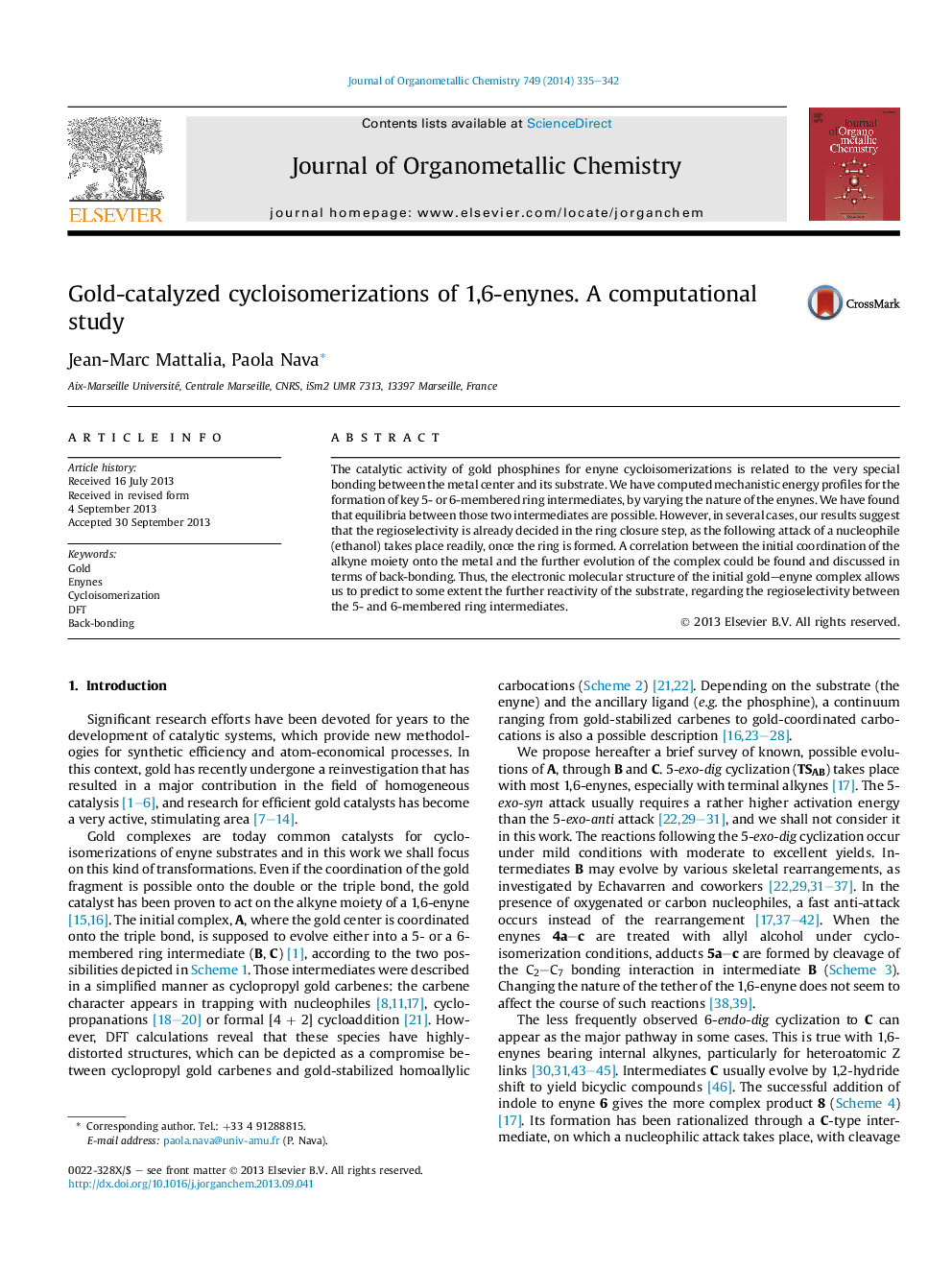| Article ID | Journal | Published Year | Pages | File Type |
|---|---|---|---|---|
| 1321371 | Journal of Organometallic Chemistry | 2014 | 8 Pages |
•We computed gold-catalyzed enyne cycloisomerization reactions.•The bonding of alkynes on gold contains the key of the metal catalytic activity.•Initial gold–enyne coordination allows a prediction on further reactivity.
The catalytic activity of gold phosphines for enyne cycloisomerizations is related to the very special bonding between the metal center and its substrate. We have computed mechanistic energy profiles for the formation of key 5- or 6-membered ring intermediates, by varying the nature of the enynes. We have found that equilibria between those two intermediates are possible. However, in several cases, our results suggest that the regioselectivity is already decided in the ring closure step, as the following attack of a nucleophile (ethanol) takes place readily, once the ring is formed. A correlation between the initial coordination of the alkyne moiety onto the metal and the further evolution of the complex could be found and discussed in terms of back-bonding. Thus, the electronic molecular structure of the initial gold–enyne complex allows us to predict to some extent the further reactivity of the substrate, regarding the regioselectivity between the 5- and 6-membered ring intermediates.
Graphical abstractGold phosphines are exceptional catalysts for enyne cycloisomerization reactions. This computational study discloses some keys on their catalytic activity, related to the alkyne moiety initial coordination on the metal.Figure optionsDownload full-size imageDownload as PowerPoint slide
